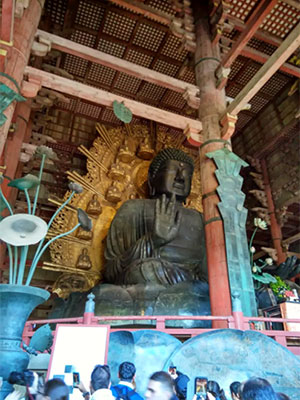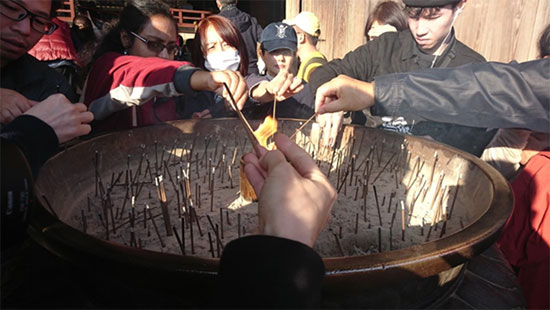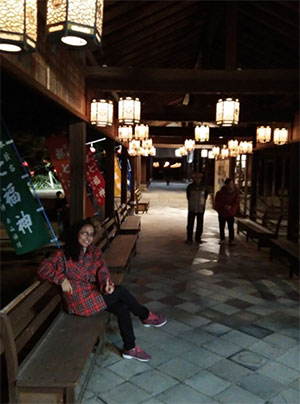Sakura Mentor
Temples and Shrine in Japan
Pousali Mukherjee
Updated in March 2021
Hello everyone! This is my second report as Indian mentor for Sakura Science Club…
I thank Sakura Science Club for giving me the opportunity to write for the new monthly column. This time I thought I will write about the temples and shrines in Japan. Note: In general, “temples” in Japan refer to Buddhism, while “shrines” refer to traditional Shinto beliefs.
Japan consists of many temples and shrines, and each is unique in my perspective. To my surprise, there are some unique similarities with minor variations between Japanese temples, shrines and Indian temples. If you have been to India, one can observe the pointed peaks of Indian temples. The top of Japanese temples, on the other hand, consists of rooftop like sloping architecture, which also converges at the top. Then inside temples, there are smaller subparts that lead to the main place of worship, similar to temples. /p>
Coming to idol worship, Japanese temple symbolizes Buddhism to a large extent. One can see the statue of Buddha seated in the main place of worship in the temple. And recently, in one temple I came across the statue of Swami Vivekananda next to the Buddha statue and I was delighted! Swami Vivekananda was a great spiritual leader in West Bengal, India. The style of worship in Japanese temple is worth mentioning. The use of the holy fire while the monks offer their prayers is also similar with the pandits in India when the worship is done. And in some traditional shops in Japan, I have seen the Indian incense prayer sticks and I was fascinated.

When I visited the Todaiji temple in Nara, I had also lighted an incense stick and put it in the mud place in the constructed structure. Me, along with some students in Kyoto University had visited the temple. A guide had offered us help to explain the history of the temple, and I was amazed to hear that India had played a role in the history of part of the Todaiji temple. The guide had told us to touch the feet of lord Buddha and it also shows the similarity between our cultures. It seemed like the more I know Japan, the more I appreciate it.

The temples and shrines also play an important role in New Year in Japan. On the eve of New Year, I appreciate the culture of Japanese families going to the shrine together. I had also gone on 31st December 2019 to be a part of the culture and normally I would not see many people on the street. But on that day, it was great to see many people coming and forming a long line from inside the shrine. Fortunately, when I went at around 10:30 pm, the line was shorter, so I entered the shrine. Later on, I could see the line getting longer and longer with each passing minute, and within 15 minutes, the line was already outside the shrine grounds. It was good to see there was no chaos, and everyone was patiently and happily waiting for the midnight to fall. Then it was time and there was a big bell sound. I realized that the line was for the bell (joya-no-kane) and before I had heard that the bell would be rung 108 times.* And every family had the opportunity to ring the bell. I was fortunate as I went alone, but when I was in the line I interacted with a family in general and they asked me if I wanted to join with them in ringing the bell. I happily agreed to do that and it was great experience for me! The shrine was also looking beautiful that day and worship was going on inside the main hall and I had happily participated in the New Year celebration!
*This is to get rid of our 108 worldly desires and evil thoughts (klesha in Sanskrit) for a better new year.








